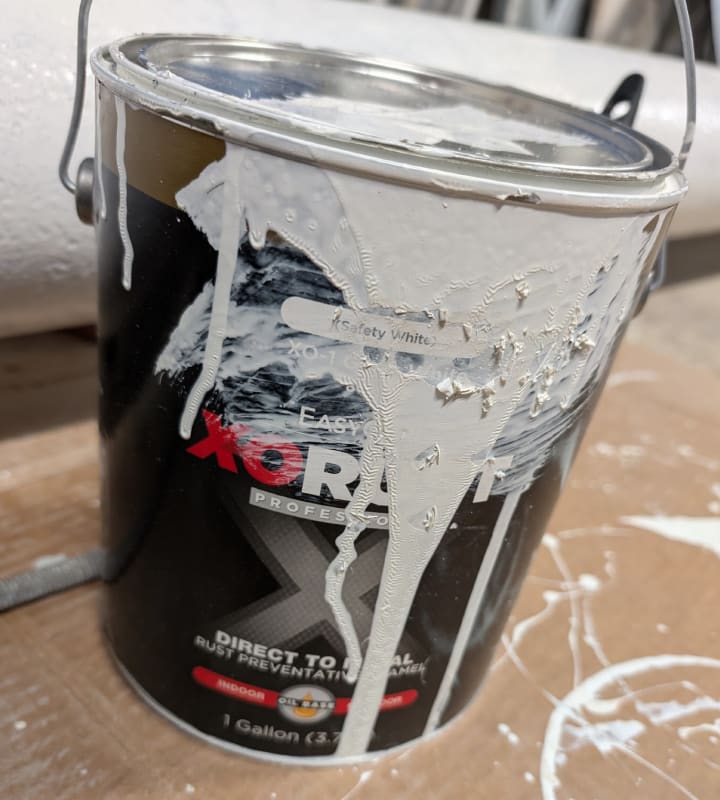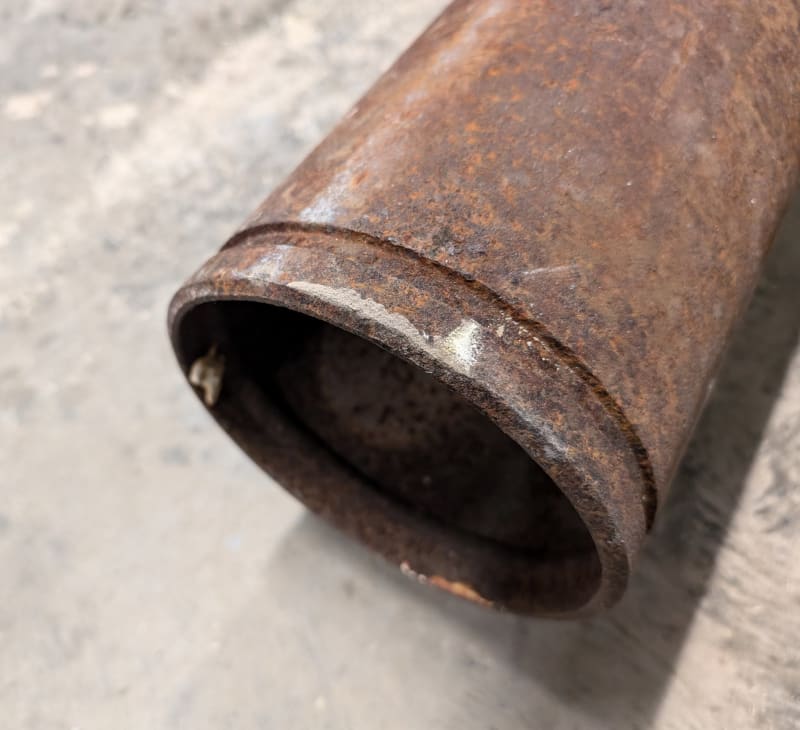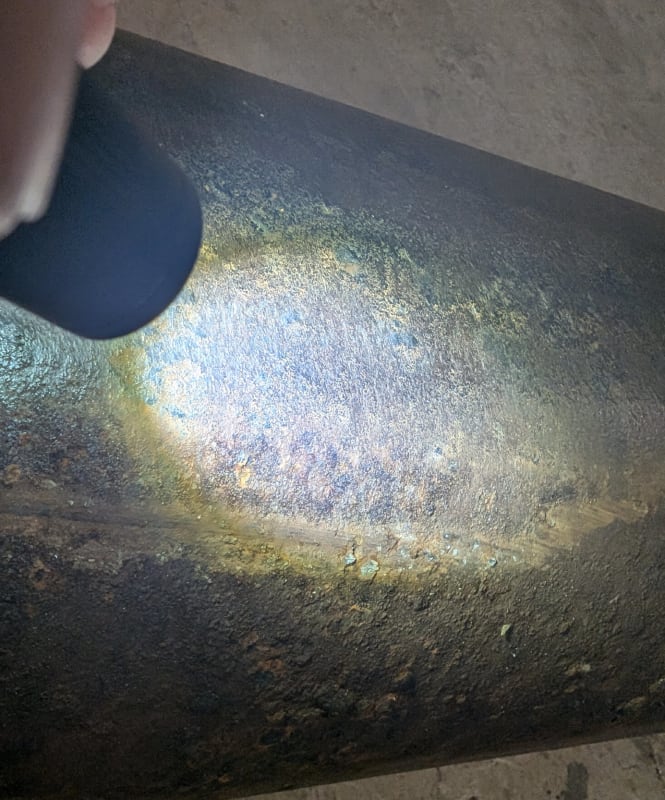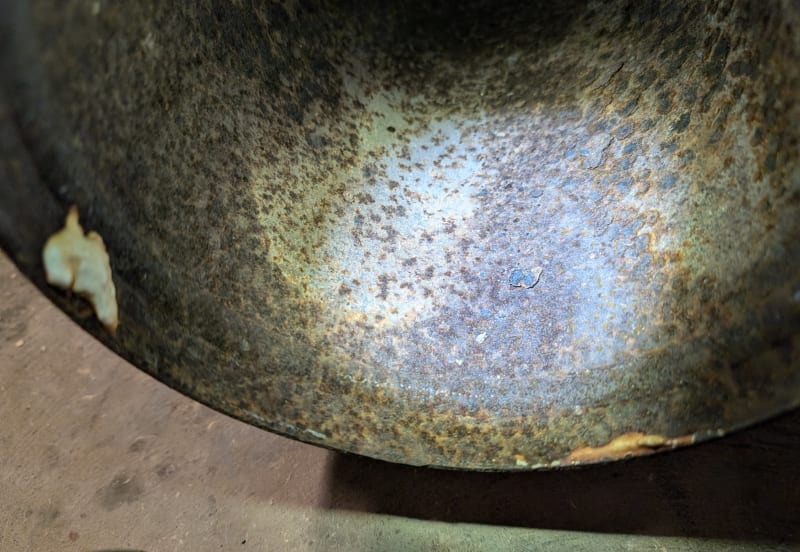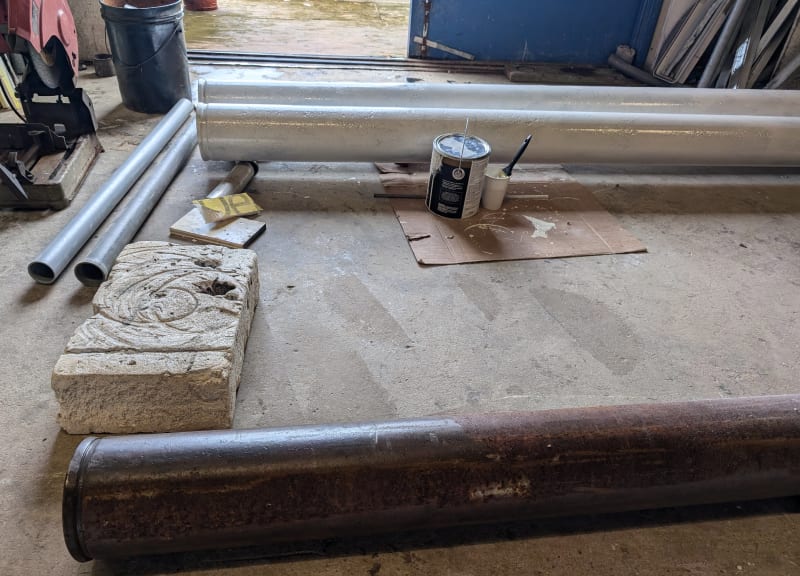Did a search and could not get an apropos result.
I'm assisting a US based facility on an island, and a Contractor has had a half dozen nominal 20' sticks of S40 A53B 6" grooved piping sitting outside in his storage yard. For years. It is to be used in a chilled water distribution system (40F at about 70' head). The exterior of the piping is, as would be expected, rough. Rust craters maybe 1/16"+ deep. Wire brushed and painted it looks...like old rusty piping that has been wire brushed and painted...![[surprise] [surprise] [surprise]](/data/assets/smilies/surprise.gif)
The interior is not much better - best comparison would be an inconsistent 30-40 grit sandpaper - with some areas at 20 grit and fewer at 60.
In my honest opinion, this material is now suitable for fenceposts or the scrap dealer...
See pics below.
I have advised the owner to reject this piping, and make the Contractor purchase new. As would be expected, the Contractor is pushing back. "It's not too bad, it will clean up nice, etc."
As can be seen by the pics above, the outside (after wire brushing and painting)is ...fair, with some wall thickness loss. But the inside is still cr@p. I know of no way to de-rust the inside of half a dozen sticks of 20' steel piping. If they were to build a giant bathtub and use a chemical rust remover, I would think that might work; but with another reduction in wall thickness.
Is there anything I am missing? The owners are kind-of trying to find a middle ground. This seems like such a no-brainer decision to me - "No." That said, it is really hard to get materials here. Think a once-a-month ship, and whatever you want on the ship needs to be at the dock 2 weeks in advance. It makes construction projects really drag out, and they are under pressure from politicos above to get this project completed. My final recommendation to the owner's staff has been "you do not want to accept compromised material for a system that will be in service for literally decades."
Note that a response of "Are u nuts?" would not be entirely un-expected.![[thumbsup2] [thumbsup2] [thumbsup2]](/data/assets/smilies/thumbsup2.gif)
TIA.
Edit - Seems I now need to manually post a link to each pic. Don't remember doing this previously.
I'm assisting a US based facility on an island, and a Contractor has had a half dozen nominal 20' sticks of S40 A53B 6" grooved piping sitting outside in his storage yard. For years. It is to be used in a chilled water distribution system (40F at about 70' head). The exterior of the piping is, as would be expected, rough. Rust craters maybe 1/16"+ deep. Wire brushed and painted it looks...like old rusty piping that has been wire brushed and painted...
![[surprise] [surprise] [surprise]](/data/assets/smilies/surprise.gif)
The interior is not much better - best comparison would be an inconsistent 30-40 grit sandpaper - with some areas at 20 grit and fewer at 60.
In my honest opinion, this material is now suitable for fenceposts or the scrap dealer...
See pics below.
I have advised the owner to reject this piping, and make the Contractor purchase new. As would be expected, the Contractor is pushing back. "It's not too bad, it will clean up nice, etc."
As can be seen by the pics above, the outside (after wire brushing and painting)is ...fair, with some wall thickness loss. But the inside is still cr@p. I know of no way to de-rust the inside of half a dozen sticks of 20' steel piping. If they were to build a giant bathtub and use a chemical rust remover, I would think that might work; but with another reduction in wall thickness.
Is there anything I am missing? The owners are kind-of trying to find a middle ground. This seems like such a no-brainer decision to me - "No." That said, it is really hard to get materials here. Think a once-a-month ship, and whatever you want on the ship needs to be at the dock 2 weeks in advance. It makes construction projects really drag out, and they are under pressure from politicos above to get this project completed. My final recommendation to the owner's staff has been "you do not want to accept compromised material for a system that will be in service for literally decades."
Note that a response of "Are u nuts?" would not be entirely un-expected.
![[thumbsup2] [thumbsup2] [thumbsup2]](/data/assets/smilies/thumbsup2.gif)
TIA.
Edit - Seems I now need to manually post a link to each pic. Don't remember doing this previously.

